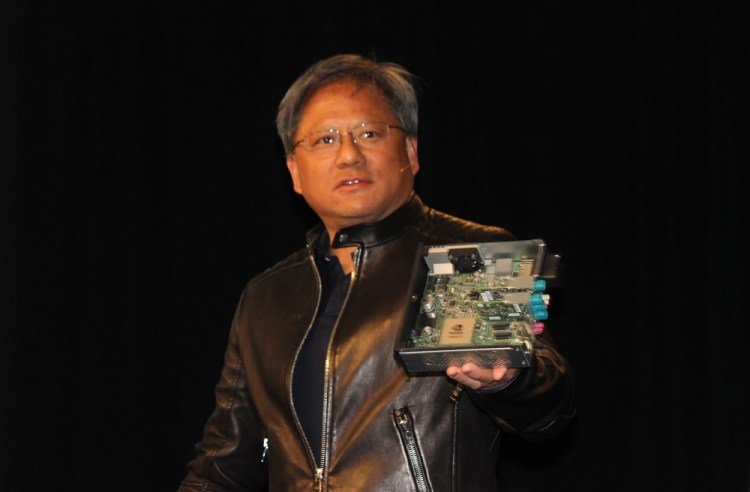Graphics chip maker Nvidia beat Wall Street’s expectations for the fourth fiscal quarter earnings for the period ended Jan. 25.
Nvidia reported non-GAAP earnings of 43 cents a share on revenue of $1.25 billion. Analysts had expected the Santa Clara, California-based visual computing company to report earnings of 29 cents a share on revenue of $1.2 billion.
Nvidia pioneered 3D graphics on the PC, and its graphics cards became synonymous with high-end PC gaming. It survived a Darwinian market that left only Intel and Advanced Micro Devices as competitors. Now Nvidia is branching out to make visual computing chips for cars, mobile devices, and supercomputers.
“Momentum is accelerating in each of our market-specialized platforms, driving record revenue in the quarter and full year,” said Jen-Hsun Huang, president and chief executive of Nvidia, in a statement. “GeForce (PC graphics chips) and Shield (gaming tablet) are extending our reach in the rapidly growing global gaming market. Our Drive auto-computing platform is at the center of the advance toward self-driving cars.”
He added, “Grid is enabling enterprises to finally virtualize graphics-intensive applications. And our Tesla accelerated computing platform is helping to ignite the deep learning revolution. The success of these platforms highlights the growing importance of visual computing and the opportunities ahead for Nvidia.”
Nvidia now has $4.6 billion in cash. In the fourth quarter of 2013, the company posted earnings of 24 cents a share on revenue of $1.14 billion.
In the previous quarter, the third fiscal quarter of 2014, Nvidia also beat earnings estimates, reporting earnings per share of 31 cents on revenue of $1.23 billion.
At the recent 2015 International CES trade show in Las Vegas, Huang showed off a chip dubbed the Tegra X1, which could be used in two different computers targeted at cars. One could operate the dashboard and entertainment systems, while the other could be the brain of a self-driving car.
While Nvidia has shipped more than 7 million chips for cars, the potential for mobile devices is much higher. But in that market, Nvidia faces huge competition from Qualcomm and Intel.
VentureBeat's mission is to be a digital town square for technical decision-makers to gain knowledge about transformative enterprise technology and transact. Learn More

